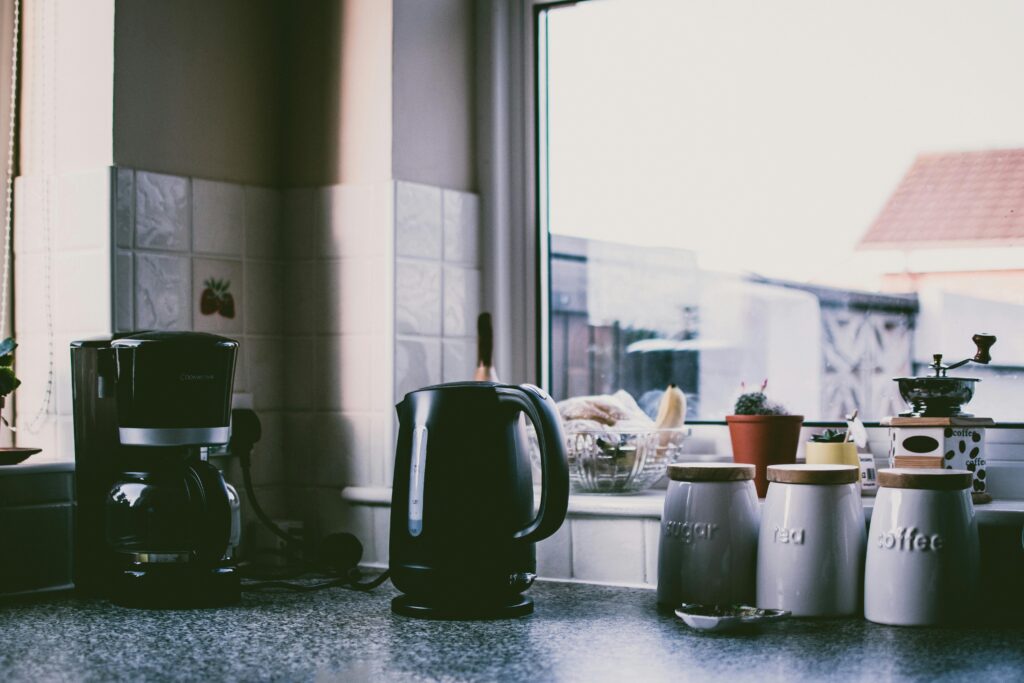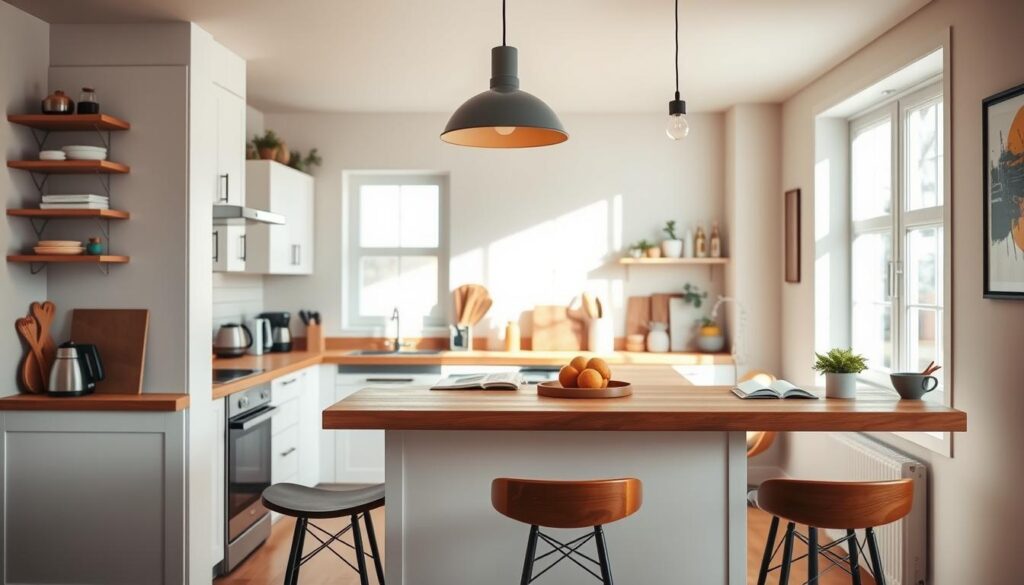The kitchen has always been the heart of the home, and in 2025, it’s embracing innovative designs that blend functionality with aesthetic appeal. Whether you’re planning a complete kitchen remodel or looking to update specific elements, these six trends will help you create a modern, stylish, and efficient space.
Step 1: Choose a Warm and Earthy Color Palette
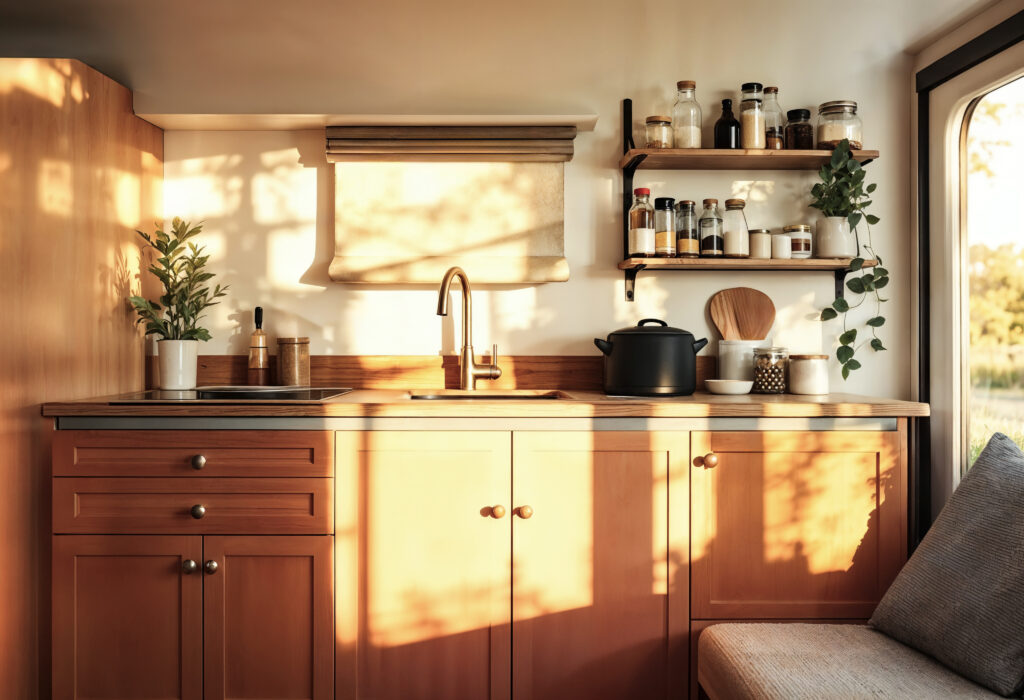
In 2025, kitchen color schemes are shifting from stark whites to warm, earthy tones. Designers are incorporating colors like soft creams, warm greiges, and deep charcoals to create inviting and cozy atmospheres. These hues add depth and character, making the kitchen a more welcoming space for family and guests.
Key Features:
- Soft Creams and Warm Greiges: These colors provide a neutral yet warm backdrop, allowing other design elements to stand out. They help to create a relaxed and inviting atmosphere where family and friends can gather comfortably.
- Deep Charcoal Accents: Incorporating darker shades like charcoal or espresso adds contrast and sophistication to the kitchen design. These darker elements can be used on cabinetry, backsplashes, or even countertops to give the space a refined aesthetic.
- Natural Materials: Pairing these colors with wood, stone, or clay enhances the earthy feel and brings a touch of nature indoors. Wooden cabinets, stone countertops, and ceramic tiles contribute to a grounded and timeless look.
By adopting this trend, you create a cozy and inviting environment that feels both modern and timeless.
Step 2: Experiment with Mixed Material Designs
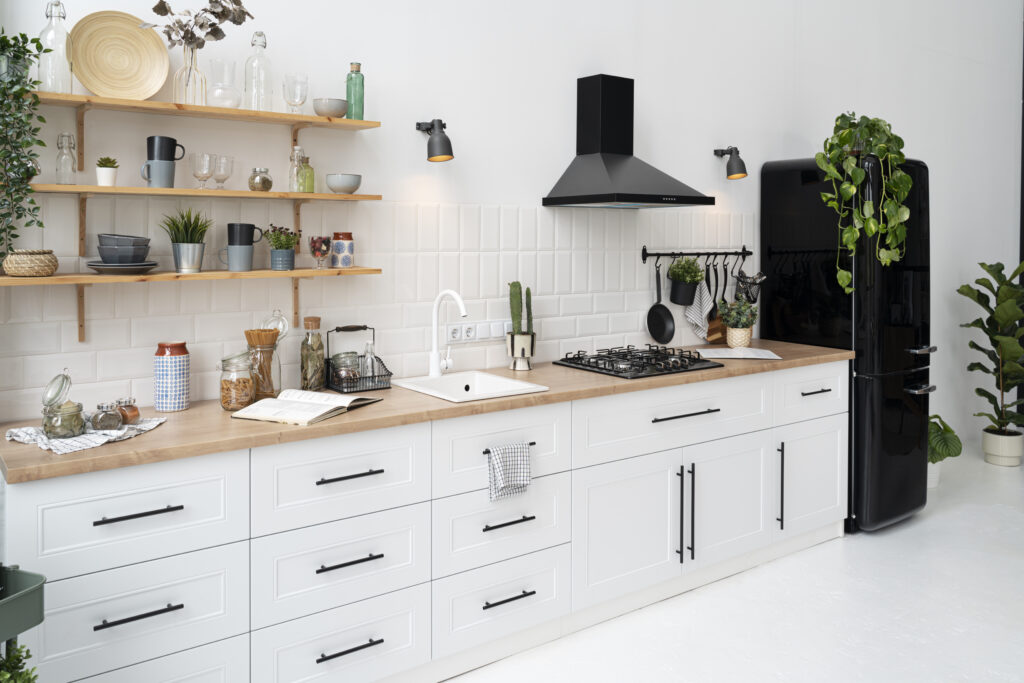
Combining different materials is becoming a hallmark of contemporary kitchen design. Mixing elements such as wood, metal, stone, and glass creates a layered and personalized look that reflects individual style.
Key Features:
- Wood and Metal Combinations: Wood adds warmth and an organic feel, while metal introduces an industrial edge, balancing each other beautifully. For example, wooden cabinets with metal handles or open shelving with black steel brackets can create a striking contrast.
- Stone Countertops with Glass Backsplashes: This pairing offers a sleek and modern aesthetic, with the stone providing durability and the glass adding a reflective quality that brightens the space. Glass backsplashes can also be customized with unique textures and colors to enhance visual interest.
- Textured Finishes: Incorporating materials with different textures, such as matte and glossy finishes, rough stone, and smooth glass, adds depth and interest, making the kitchen visually appealing.
This trend encourages creativity, allowing homeowners to craft a kitchen that is both functional and uniquely theirs.
Step 3: Incorporate Open Shelving and Display Areas
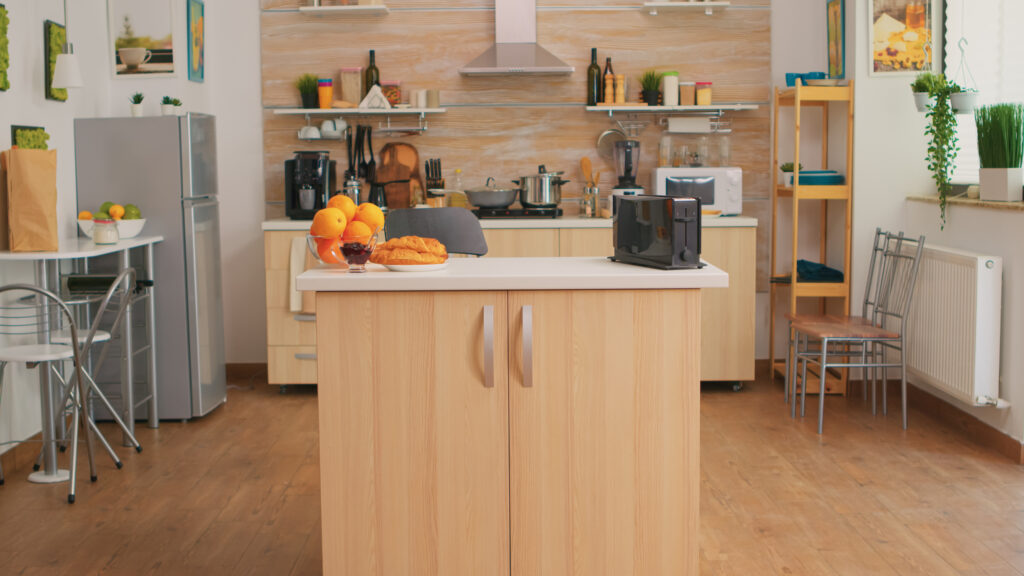
Open shelving continues to gain popularity as it offers both practical storage solutions and opportunities for personalization. Displaying dishware, cookbooks, and decorative items makes the kitchen feel lived-in and showcases the homeowner’s personality.
Key Features:
- Floating Shelves: These provide a minimalist look and can be customized in various materials to match the kitchen’s design. Open shelving is perfect for displaying everyday dishware, allowing for easy access.
- Integrated Lighting: Adding under-shelf lighting not only highlights displayed items but also enhances functionality. LED strips or puck lights under shelves can illuminate countertops and improve visibility.
- Curated Displays: Thoughtfully arranging items such as vases, framed artwork, plants, or stylish jars keeps the space organized and aesthetically pleasing. Selecting a few statement pieces instead of overcrowding shelves ensures a balanced look.
While open shelving adds charm, it’s essential to maintain organization to prevent the area from appearing cluttered.
Step 4: Upgrade to a Smart and Sustainable Kitchen
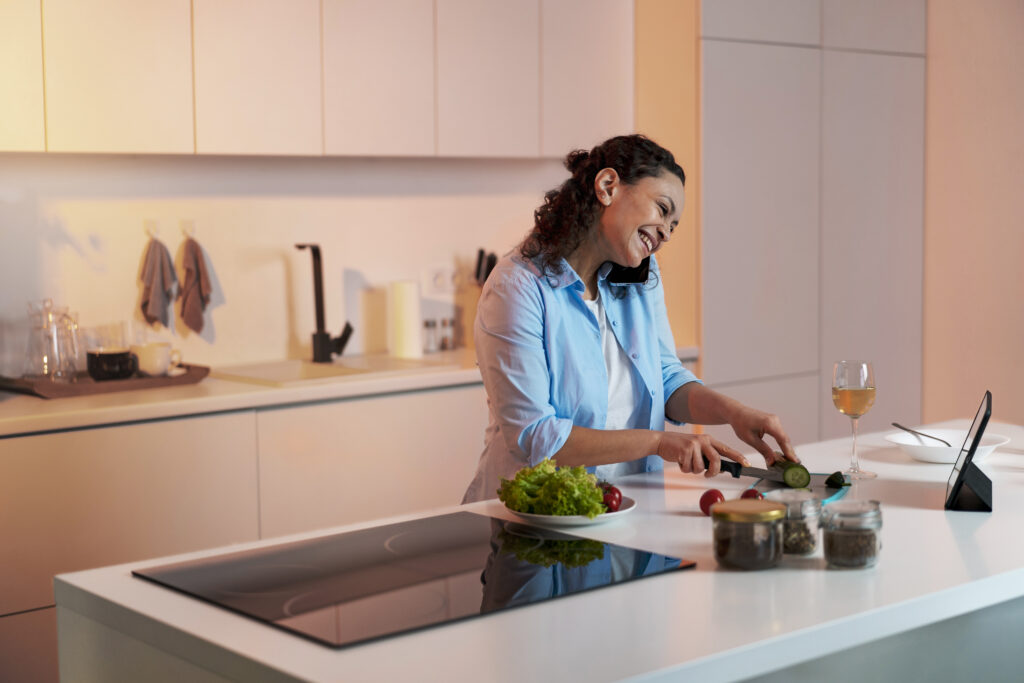
As technology advances, kitchens are becoming smarter and more eco-friendly. Homeowners are integrating appliances and systems that make cooking more efficient and reduce environmental impact.
Key Features:
- Energy-Efficient Appliances: Modern appliances consume less energy, saving money and reducing the household’s carbon footprint. Look for Energy Star-rated refrigerators, dishwashers, and ovens to ensure efficiency.
- Smart Home Integration: Voice-activated assistants and smart devices allow for hands-free control of lighting, temperature, and appliances. For example, smart ovens can be preheated remotely, while smart faucets can dispense precise amounts of water on command.
- Sustainable Materials: Using eco-friendly materials like reclaimed wood, recycled metals, and low-VOC paints contributes to a greener kitchen. Bamboo flooring, quartz countertops, and biodegradable cleaning products also support sustainable living.
Embracing this trend not only enhances convenience but also aligns with a growing commitment to environmental responsibility.
Step 5: Install Statement Lighting Fixtures
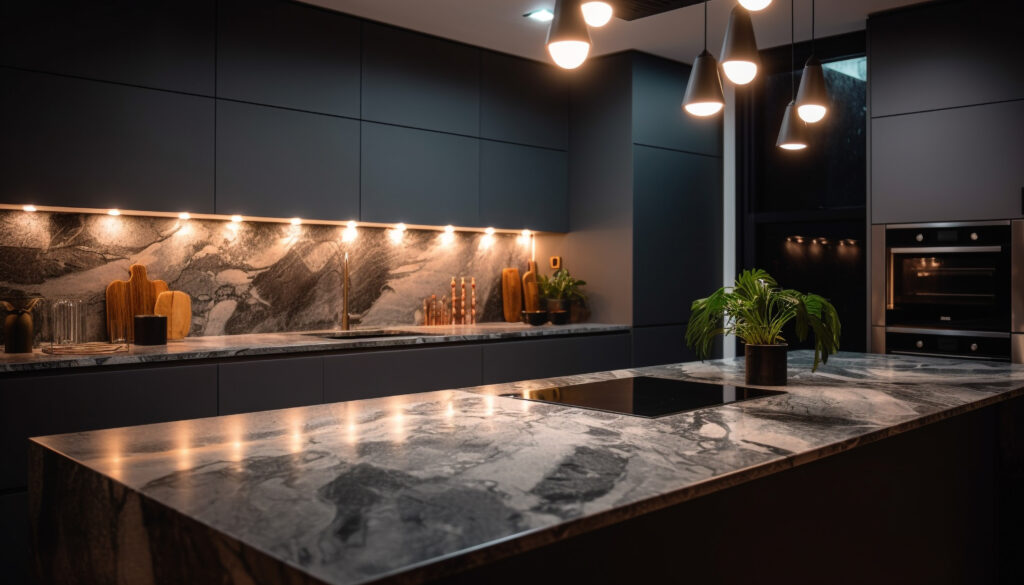
Lighting plays a crucial role in kitchen design, and in 2025, statement fixtures are taking center stage. Bold, sculptural lighting adds a focal point and elevates the overall aesthetic of the space.
Key Features:
- Oversized Pendants: Large pendant lights over kitchen islands or dining areas draw attention and provide ample illumination. Choosing oversized fixtures with unique shapes or metallic finishes can transform the kitchen into a stylish statement area.
- Artistic Chandeliers: Unique designs serve as functional art pieces, adding character to the kitchen. Chandeliers with mixed materials, such as glass, brass, or wood, can enhance the overall ambiance.
- Adjustable Lighting Systems: Flexibility in lighting allows for different moods and tasks, enhancing both functionality and ambiance. Dimmable lights and smart lighting solutions help create a dynamic environment, from bright cooking conditions to cozy evening gatherings.
Selecting the right lighting fixture can transform the kitchen, making it not only a place for cooking but also a stylish gathering spot.
Step 6: Optimize Storage with Personalized Solutions
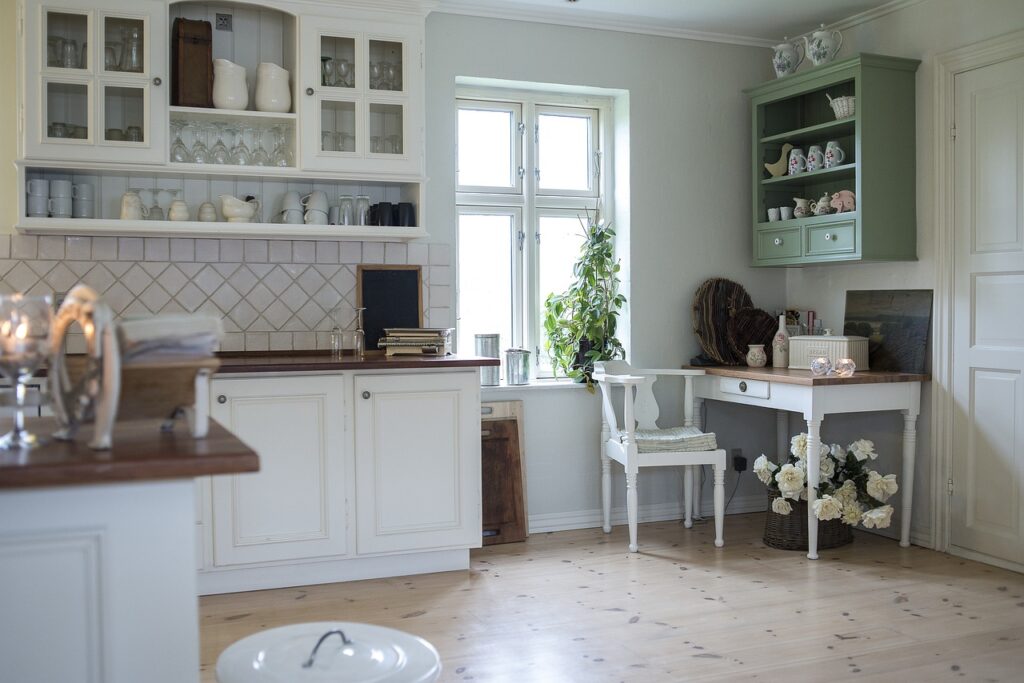
Efficient storage is paramount in kitchen design. In 2025, there’s a focus on personalized solutions that cater to specific needs, ensuring that every item has its place.
Key Features:
- Custom Cabinetry: Tailored cabinets maximize space and accommodate unique kitchen layouts. Features like built-in spice racks, pull-out trash bins, and corner storage solutions help make the most of available space.
- Pull-Out Shelves and Drawers: These make accessing items easier, especially in deep cabinets. Pull-out pantry shelves and roll-out trays in base cabinets improve functionality and ease of use.
- Built-In Organizers: Incorporating dividers, spice racks, utensil trays, and pot lid holders keeps the kitchen orderly and efficient. Dedicated storage for appliances like mixers or coffee makers also helps reduce countertop clutter.
Investing in smart storage solutions enhances the kitchen’s functionality, making daily tasks more streamlined and enjoyable.
Conclusion
The kitchen design trends of 2025 emphasize warmth, personalization, and sustainability. By incorporating these elements, you can create a space that is not only beautiful but also tailored to your lifestyle. Whether it’s through the use of earthy color palettes, mixed materials, open shelving, smart technology, statement lighting, or customized storage, these trends offer a roadmap to a modern and inviting kitchen.
For more inspiration and ideas, explore our other articles on kitchen design and home decor.

